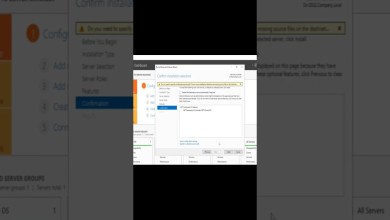Troubleshooting BSoD During Windows 10 Factory USB Install: WimFsf.sys Error
Summary: Encountering a Blue Screen of Death (BSoD) with a “Write to Read-Only Memory” error during a Windows 10 Factory USB install? Learn about troubleshooting steps and potential solutions for the WimFsf.sys issue.
—
If you’ve ever attempted to perform a clean Windows 10 installation using a Factory USB and found yourself facing a dreaded Blue Screen of Death (BSoD) with an error related to WimFsf.sys, you’re not alone. This issue can be frustrating, but understanding the problem and implementing the right troubleshooting steps can help you overcome it.
What is WimFsf.sys?
WimFsf.sys is a system file associated with Windows Imaging Format (WIM), a file-based disk image format used to deploy Windows operating systems. The WimFsf.sys driver plays a crucial role in the process of installing Windows from a WIM file.
Understanding the Error: Write to Read-Only Memory
The specific error message indicating a “Write to Read-Only Memory” during the Windows 10 Factory USB install suggests an issue with the system attempting to write data to a memory location designated as read-only. This can lead to a system crash, resulting in the BSoD.
Troubleshooting Steps:
Check USB Drive Integrity:
Ensure that the Factory USB drive you are using is not corrupted. Try creating a new one using a reliable tool like Rufus or the official Windows Media Creation Tool.
Verify System Requirements:
Confirm that your system meets the minimum requirements for installing Windows 10. Check for hardware compatibility and ensure that there are no conflicting drivers.
BIOS/UEFI Settings:
Access your system’s BIOS or UEFI settings and ensure that they are configured correctly for the Windows installation. Check for any secure boot or legacy mode settings that might impact the process.
Update Drivers:
Ensure that all your drivers, especially storage and chipset drivers, are up-to-date. Outdated or incompatible drivers can lead to installation errors.
Memory Check:
Run a memory diagnostic test to check for any issues with your system’s RAM. Faulty RAM can cause various errors during installations.
Check for Disk Errors:
Use the built-in Windows utility, CHKDSK, to scan and repair any potential disk errors. Corrupted disk sectors can lead to installation failures.
Disable Overclocking:
If your system is overclocked, revert it to the default settings during the installation process. Overclocking can sometimes lead to stability issues.
Seeking Further Assistance:
If the issue persists after trying the above steps, it might be beneficial to seek help from online forums, Microsoft support, or the community associated with your specific hardware.
Remember to provide detailed information about your system specifications, the steps you’ve taken, and any error codes you’ve encountered to receive more accurate assistance.
In conclusion, encountering a BSoD with a “Write to Read-Only Memory” error during a Windows 10 Factory USB install can be challenging, but with systematic troubleshooting, you can often identify and resolve the underlying issues. By following the steps outlined above, you increase your chances of successfully completing the installation process.
[ad_2]
source



